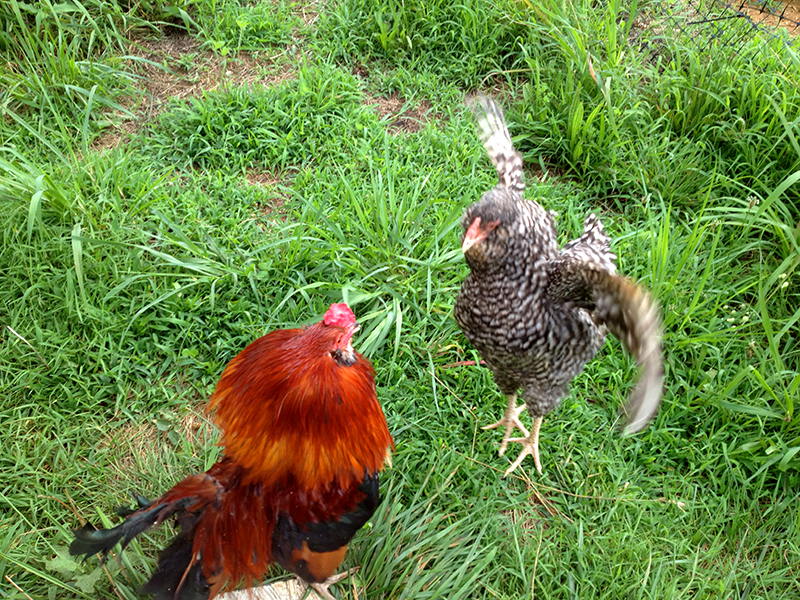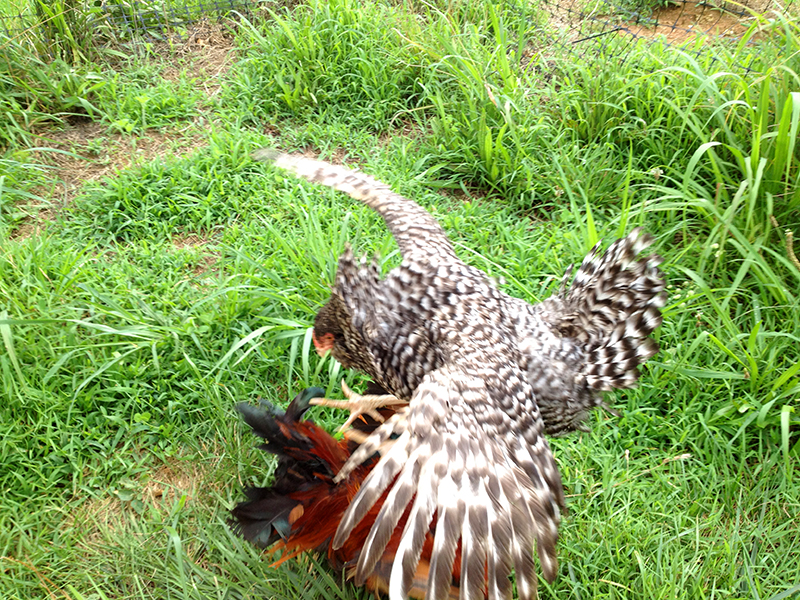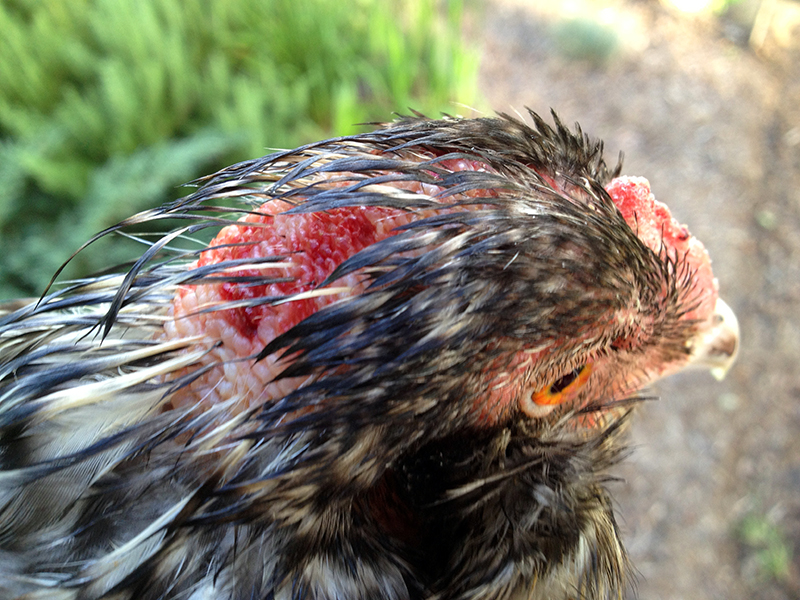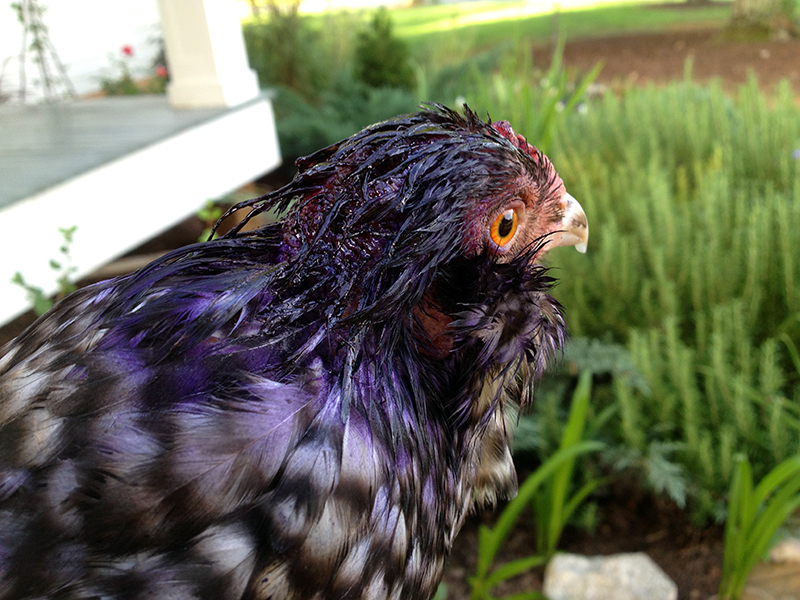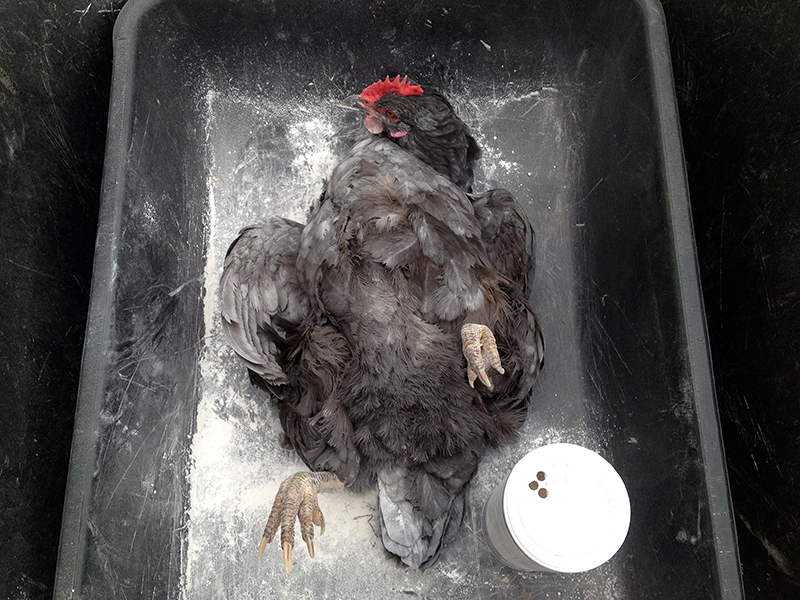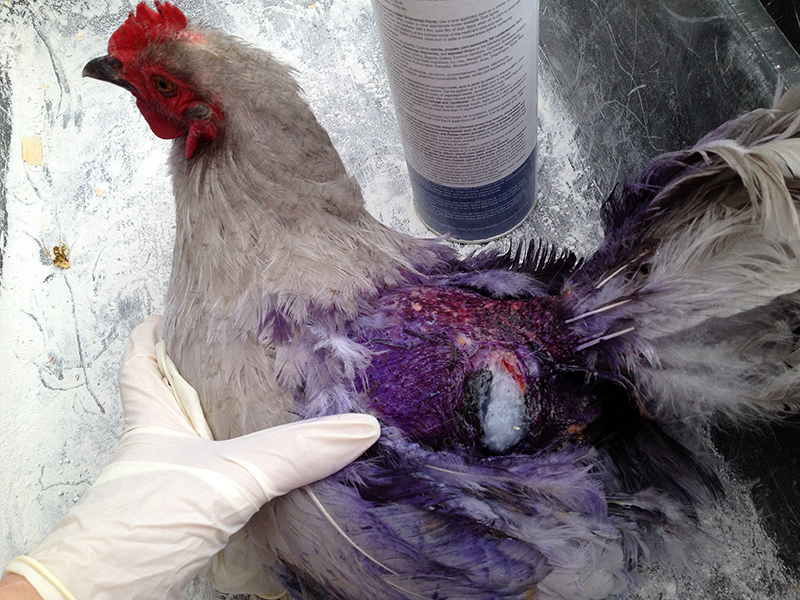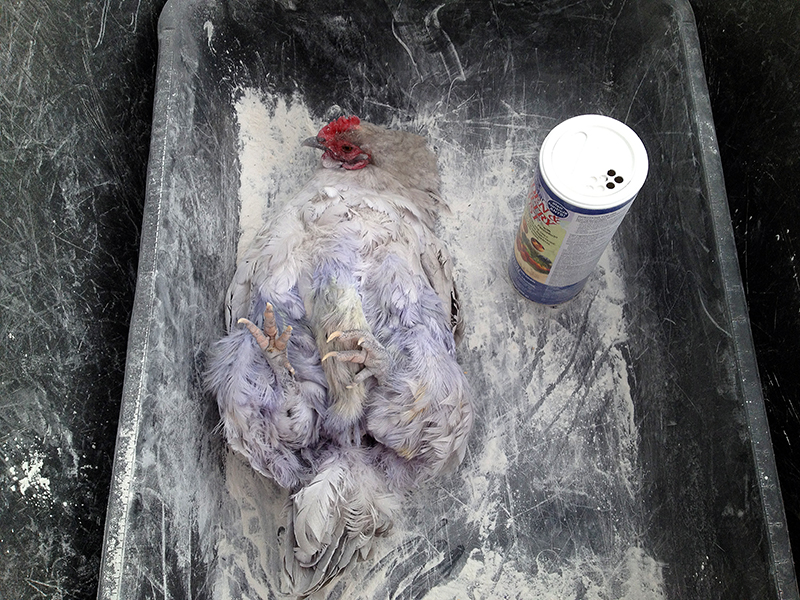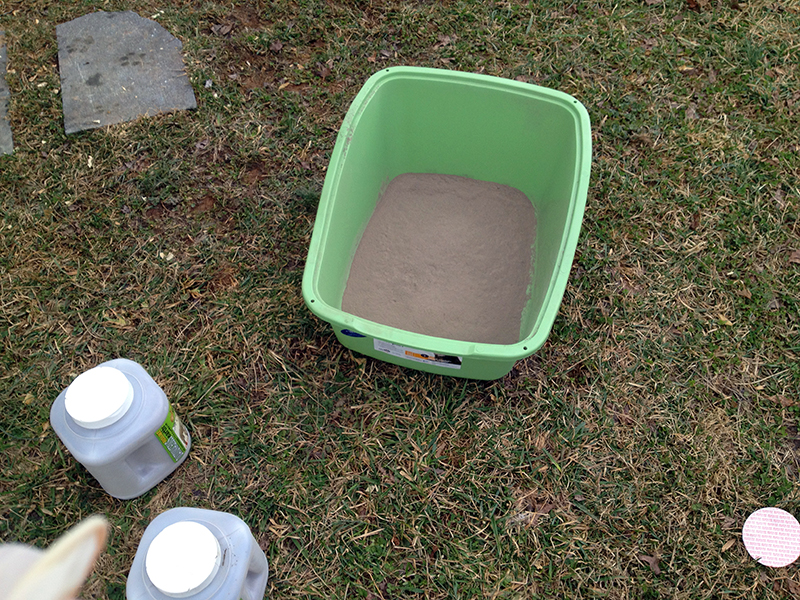On Saturday it was time to cull the deformed chick and move Oregano back in with the main flock. Two odious tasks I’d been dreading.
Before removing the two broody hens to their nursery coops, I had finally achieved a nice, stable and harmonious flock. The rooster was sweetly keeping order, and every bird was finally in good health, all wounds were healed and parasites eradicated. Things were going along well. However, whenever a chicken is added or subtracted from a flock, a power vacuum opens and each bird scrambles to attain the highest possible spot in the pecking order. The birds don’t “remember” a former flock mate, even if she was only out of the coop for a month. To all of them Oregano is a stranger, and their instinct is to kill her in order to preserve their own position in the flock.
So I know all this going in, thus the dread, and I tried a few things to see if I could smooth the transition. I put Oregano in the little run outside of the coop and released Calabrese, the rooster, from inside. I figured if he accepted Oregano back in to the flock he would perhaps help protect her from attack by the other hens, or they would see her as less of a threat if she had her baby-daddy on her side.
But when the two of them got together, this happened:
Then this:
And this:
The birds went at each other in a dazzling display of spread feathers and clashing claws. Oregano puffed herself up as large as possible as she fended off Calabrese. Between attacks Calabrese “danced” for Oregano, so he was definitely conflicted about whether to fight or flirt with this “new” bird, with whom he had one biological offspring growing up in a nearby coop.
After things settled a bit I let the other hens out, one by one. Most hens ignored Oregano, and so I thought I was in the clear. So I released them all into the yard, hoping that some free ranging would give them something to occupy their thoughts and diffuse any potential conflicts. The flock ran out, and Oregano ran into the coop. She seemed grateful to be home again and started eating right away. Things seemed to be going okay.
Then I went out in the evening and found the flock, minus Oregano, hanging out at the compost pile in the woods. Oregano was huddled under the fig by the garage, hiding. She had been shunned, and had to take shelter.
I called all the chickens back to the run behind the coop to force them to be together in a slightly smaller space. The hens took turns jabbing at Oregano’s head and she ran amongst them, head down and feathers fully puffed, looking like a football player lumbering down the field. It’s wasn’t peaceful but she seemed to be holding her own. And this was really her own battle to fight. There’s nothing I could do as they jousted.
Oregano spent the night sleeping in a nesting box—a good defensive position—with the other birds on the roosts. Sunday morning all seemed okay, but I had to go out of town for the day and was very nervous to leave the unstable flock cooped up all day. With no where to run, the confined area can be fatal (see Cora’s scalping and near-death experience last summer). But there wasn’t anything I could do as I had promised to go.
Last night I got home around seven and opened the coop immediately after parking the car. As I had feared, I found that Oregano had been attacked.
Her head and comb were torn open and bloody. So the first thing I did, before even letting my poor dog out to pee, was to grab Oregano and bring her inside for first aid. She didn’t even struggle.
Oregano got a Bactine cleansing, then a nice coat of Neosporin. I covered that with a thick layer of black salve, which supposedly tastes bad to attacking chickens. Over all that I sprayed Blu-Kote, a wound dressing. It masks the red blood color that encourages chickens to continue pecking. By the time she was done she looked a fright, but hopefully it would be enough to get her healed and keep the other birds off of her. The good news is that when I checked on the birds this afternoon Oregano didn’t seem to have suffered further injury, so hopefully her disguise is working.
This poor girl. All she wanted to do was have a family. And after a month of sacrificing her own health, she lost her chick, was turned on by her former flockmates, and suffered injury at their beaks. I wanted to raise chicks with broody hens, because it’s less work for me, but I am not sure if the tumultuous flock dynamics makes it worth it. I still have Dahlia to get incorporated back into the flock, and the six babies. Better get a bigger tube of Neosporin…

